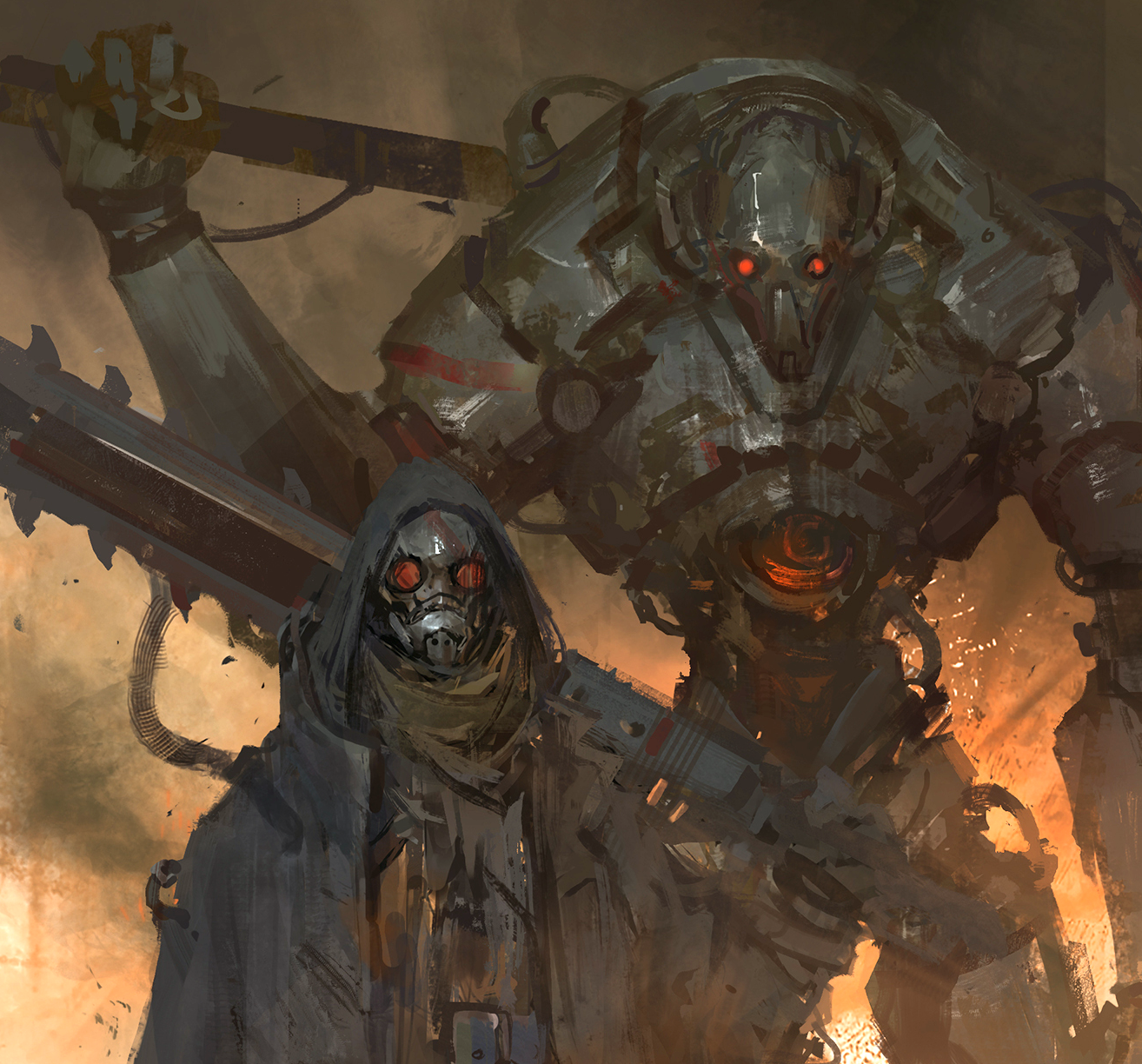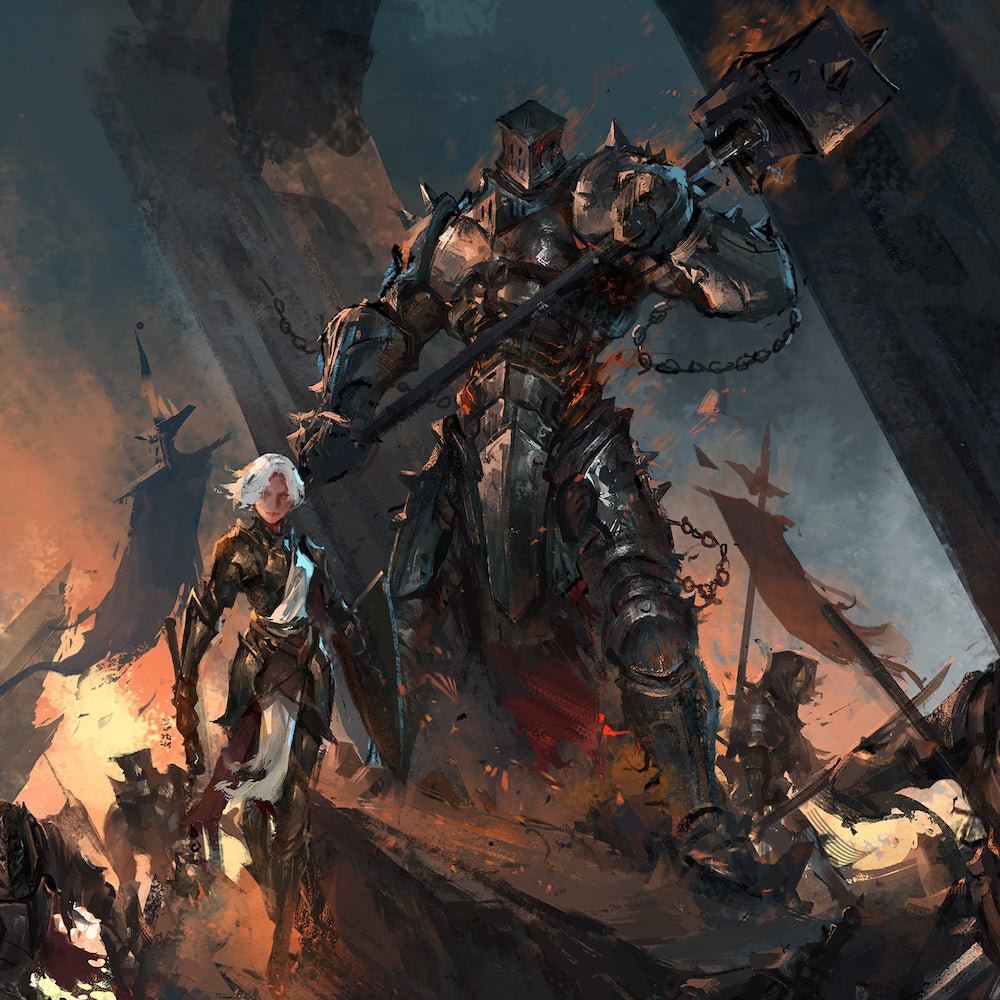Game Setup

Welcome to the Savage Wastes
The Savage Wastes game is a skirmish tabletop miniature wargame in which the players take on the command of airships and tanks, to battle for the capture of caches of ancient technology. A set of cards and 6-sided dice are used to determine outcomes and players earn coins for actions they take in the game.
Number of Players and Play Mode
In general you can play with as many players as there are vehicles that will be in play. Normally this means 2-6 players, playing in two teams. But it could mean each player is playing for themselves, against everyone else. This team versus team approach is what is considered standard play but there are also campaign play considerations under advanced rules.
Setting up the Table and Terrain
Savage wastes is played on any tabletop surface that is 2 foot by 2 foot, or larger. The more players, the more appropriate it may be to have a larger playing surface.
Diorama style terrain elements and game pieces are used to create an immersive playing experience. The game rulebook includes some ideas to get players started on creating their own handmade terrain and there are a few plastic pieces in the game box.
The placement of terrain should be collaborative amongst all players. Each player should roll to see who starts placing terrain first and then, going clockwise, each player gets to place terrain until everything is placed.
Hazards
Each team can choose 1 Hazard to place on the table. Hazards can be represented by their cards, (showing with the artwork side up) or with miniatures (with the cards off to the side of the play area. Hazards are placed after Terrain in the same fashion with a roll to determine who starts placing first.
Before Hazards are placed on the tabletop, each team reads the Hazard affect out loud.
Junk Markers
Junk Markers are placed after Hazards, in turn. Note that Junk Markers can be placed on top of terrain but, if so, only Airships can collect them.
Note: You can place hazards or junk markers close to deployment zones but, you don't know where you will be deploying so you may create an unfair advantage for your opponent!
Junk Coins
Junk Coins are used to determine a clear winner in every game of Savage Wastes. They are earned in many ways. For more information, see the sections related to Junk Collection and Repairing Damage.

Deployment Zones
Each player / team will then roll to see who gets to choose deployment zone first, second, third, etc. Reroll any ties to ensure there is a clear order for deployment. If there are many players / teams , make sure there are adequate number of deployment zones. For instance a 6" off the edge (2 players) or 6" square in each corner (4 players) of the playing surface gives you four deployment zones.

Balanced Gaming Approach
In order to play a balanced game, it is expected that the players will agree on points values for each force and what mix of airships and tanks will be deployed. For example it could be decided that 300 points will be available for each player / team and that 50% of models will be airships and 50% will be tanks. If you can't agree on these terms with other players, roll for it!
Vehicles
Vehicles are the core game assets in Savage Wastes. Each player can field Tanks and Airships in two sizes; Large or Small. Large Ships have more hit points, a higher junk cost, and more equipment slots. Assembling and painting your fleet of ships is part of the fun.
Equipment
Vehicles are outfitted with Equipment. There are various types of equipment which can be attached to a vehicle. The equipment card denotes its cost and specs. Weapons are a form of equipment and they are represented as attachments to the miniatures.
Each type of equipment has an icon to represent it. Below is a legend which shows the equipment types:
Vehicles and Equipment Points
Each vehicle and each piece of equipment has a points value. The points value for a vehicle is shown on the Vehicle Profile card. The points value for equipment is shown on the Equipment cards.
Equipment cards are attached to a vehicle in one of up to 6 slots as noted with the red numbering on the Vehicle profile card. In the example below you can see the Vehicle is worth 30 points and it has 40 points of equipment attached:
Note: Normally the equipment attached to the vehicle model reflects what has been selected in terms of equipment cards but, it doesn't have to be visually accurate. Using swappable components and magnetic connection points allows for vehicles to be modified.
Equipment Rules
The following rules apply when selecting your equipment:
- Each equipment card designates the type of vehicle and size of vehicle it can be attached to.
- No more than 3 weapons can be attached to a Large Vehicle
- No more than 2 weapons can be attached to a Small Vehicle
- No more than two of the same type of equipment can be attached to the same vehicle
Objective Cards
Once all models have been deployed to the tabletop, each player picks up 2 objective cards to be placed on the vehicle of their choice. These represent the personal objectives of the vehicle's captain and / or crew and provides an incentive for certain actions in the game.
Rolling for Initiative
After objectives are selected, it is time to decide who goes first. To do this, each player / team will roll a single D6. Play continues in clockwise from the winner from this roll. This remains the same throughout the game.
Play Phases
Starting with the player who won the initiative roll and working clockwise, each player gets a chance to work through the 5 phases of play in turn. This means that all players Move, then all players assess hazards, and then all players conduct combat (and assess any damage). And on it goes until all players start the next turn and go through the phases again. Below is the order of phases in a turn:
- Movement
- Hazards
- Combat and Damage Assessment
- Junk Collection
- Repairs
These are captured in more detail within the sections of the gameplay tutorial page.


